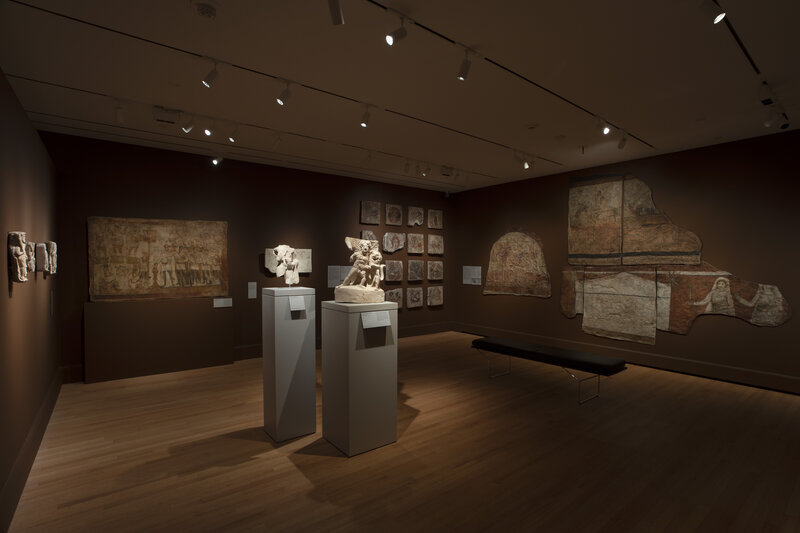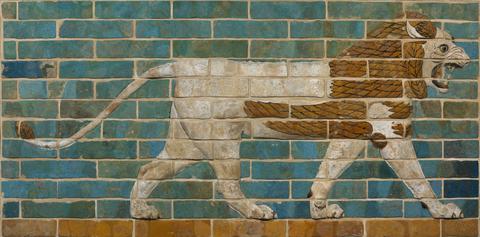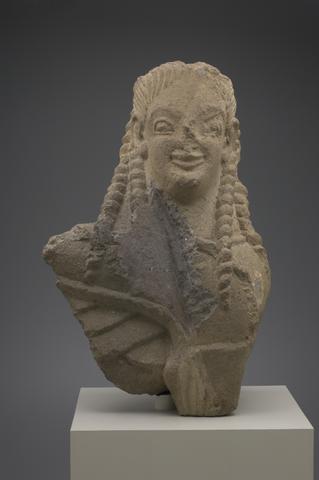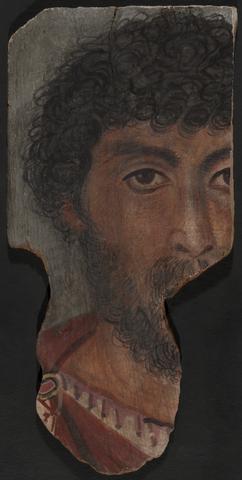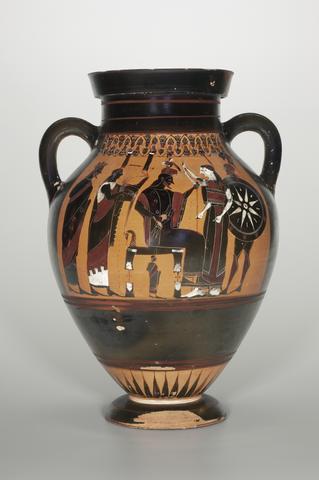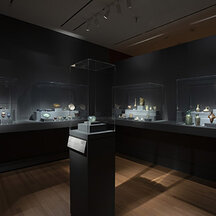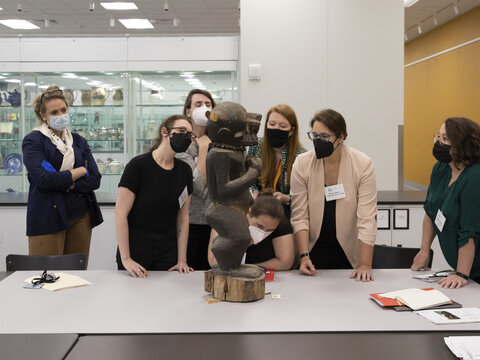The Gallery’s collection of ancient Mediterranean art is displayed in the graceful Sculpture Hall in the 1928 Old Yale Art Gallery building, the chronological installation moving from ancient Babylon through early medieval Europe. Visitors first encounter objects representing the ancient Near East, including Assyrian stone reliefs from the palace of the ninth-century B.C. King Assurnasirpal II, followed by vases, glass, sculptures, and mosaics from the Greek and Roman civilizations. In particular, the display features the Gallery’s strong collection of Classical Greek vases, as well as private and imperial Roman portraits.
The installation also includes an important gallery devoted to Yale’s finds from ancient Dura-Europos, in Syria. Excavations in the 1920s and 1930s uncovered what is likely the earliest Christian church, a synagogue whose assembly-room walls were painted with biblical scenes, and a shrine to the mysterious Roman god Mithras. Many other pagan religious sanctuaries surfaced, reflecting the multicultural nature of religious communities in the Roman provinces. Also discovered were paintings, sculptures, papyri and parchments, coins, arms and armor, and items of daily use, such as leather sandals, jewelry, and textiles. The extraordinary sculptures found at Dura-Europos are presented together with works from nearby Palmyra, asserting the close connections and exchanges between the two cities. Other highlights include a full-scale reconstruction of the Mithraeum, wall paintings from the baptistery in the Christian church (including what is among the earliest known images of Christ), decorated ceiling tiles from the synagogue, and rare examples of military equipment (including a complete set of horse armor and painted wooden shields).
At the same time as the Dura excavations, Yale also participated in excavations at Gerasa, whose mosaics represent the best of early Byzantine church-mosaic production in Jordan. One of the Gallery’s most important objects is a spectacular sixth-century A.D. floor mosaic with isometric images of the Egyptian cities of Alexandria and Memphis, which had been in storage since the 1940s. An innovative conservation treatment was recently completed, allowing the mosaic to be a highlight of the Gallery’s ancient Mediterranean installation.

